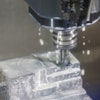
3 Factors That Influence a
Distributor’s Productivity
Epicor White Paper
3 Factors That Influence a Distributor’s Productivity
1
Introduction
Today’s modern distributors are leveraging innovative technologies to boost customer service and
logistics processes. Like all commercial endeavors, distributors need stable growth, consistent
profits, and productivity improvements to compete effectively, acquire new customers and
expand services.
Productivity is typically measured by efficiency factors and business ratios of output versus input.
However, one limitation of this viewpoint is that it focuses exclusively on the effort-to-output ratio
for current activities. It doesn’t take into account other aspects of the business that may
impact productivity.
This white paper will help you view productivity in a broader sense—from optimizing processes
and giving your people the best tools available, to making your existing capital assets more
efficient. Focusing on these three factors can help distributors hone their operations and improve
output—driving growth and profitability.
3 Factors That Influence a Distributor’s Productivity
2
Processes
When most people think about
productivity, they think about human or
machine output—how can you improve
efficiency to get more out of the same
process? Whether that means upgrading
equipment or providing resources for
employees to complete their tasks more
efficiently, this is often the first factor
business leaders examine when exploring
productivity improvements.
This is a logical first step for leaders, as it’s
not uncommon to find many processes
that were put in place with good
intentions but ultimately don’t provide
real value to the business. Leaders should
identify any archaic processes that can
be eliminated, combined, or streamlined
by leveraging other systems or processes.
This is especially true for processes that
were designed to be automated but—
through the course of time and/or custom
modifications—became cumbersome,
time-intensive tasks that steal hours from
your workers’ higher-priority duties.
Investing in new technology or making
improvements to existing systems to fully
leverage their capabilities can increase
process efficiency. However, leaders
may be hesitant to embrace this change
because of the perception of high capital
investment, the time it takes to implement
changes, or the notion that they’re too
entrenched in their current system to
make any changes. These concerns are
valid, but the companies that do invest in
technology enhancements typically find
that the improvements more than pay
for themselves with faster processes and
fewer errors.
Transitioning from multiple systems to a single
technology platform can also make it easier to
conduct operations across business units and
locations by reducing the effort it takes to find
information from disparate systems. Integrating
processes—such as order management,
production orders, kitting, delivery, and
shipping—can streamline information and
reduce the potential for human error.
People
After processes, leaders often look at ways
in which they can assist their employees with
improved productivity. That said, some leaders
simply request that employees increase output
without providing additional resources. This is a
shortsighted and ineffective solution—you can
only expect so much from employees before
the increased pressure leads to decreased
efficiency, disengagement, and—ultimately—
retention issues.
Instead, business leaders should consider how
technology can aid in employee productivity
and efficiency. Many systems are able to
automate daily routines, prioritize work queues,
and provide access to collaboration tools like
instant messaging. Additionally, providing
mobile access to critical system data can
improve productivity on many levels—such
as making sales performance data, inventory
levels, and material shortage information
available to representatives in
the field.
Technology may also increase efficiency
with human resources tasks—including on-
boarding and performance reviews, as well
as knowledge and information sharing. Many
companies also rely on technology to better
educate their workforce with user training,
videos, and online support portals that allow
employees to learn new information quickly.
Capital Assets
For the purpose of this white paper, capital
assets considered for optimizing productivity
include inventory, warehouse and facilities, and
business systems.
Inventory
The methods employed to make purchasing
decisions may be honed to increase inventory
productivity. You can gain efficiency in this area
through technology like advanced forecasting
tools that review historic demand and modify
current demand based on present
business levels.
Modern enterprise resource planning
(ERP) software can provide purchase
recommendations based on current stock
levels, known demand, anticipated demand,
and historic demand for products. Advanced
demand forecasting software can provide
a range of best-fit recommendations that
employees can review and confirm or modify
before placing orders with vendors via an
integrated ordering system.
To achieve the highest possible productivity
with your inventory, examine tools that enable
you to coordinate orders across multiple sites,
track incoming orders, and analyze forecasts.
Ideally, the ERP system will automatically alert
employees when to move product from one
site to another, suggest alternate products to
consider for out-of-stock products, or create
special order requests when needed.
Warehouse and facilities
Warehouse productivity improvements require
you to closely match your business practices
to the warehouse layout, the inventory
characteristics, and the business’ requirements.
An ERP system—or a dedicated warehouse
management system for larger distribution
centers—can help distributors improve
efficiencies in their warehouse.
About Epicor
Epicor Software Corporation drives business growth. We provide flexible, industry-specific software designed to fit the precise needs of our
manufacturing, distribution, retail, and service industry customers. More than 45 years of experience with our customers’ unique business
processes and operational requirements are built into every solution—in the cloud or on premises. With this deep understanding of your
industry, Epicor solutions dramatically improve performance and profitability while easing complexity so you can focus on growth. For more
information, connect with Epicor or visit www.epicor.com.
Contact us today [email protected] www.epicor.com
The contents of this document are for informational purposes only and are subject to change without notice. Epicor Software Corporation makes no guarantee, representations, or warranties with regard
to the enclosed information and specifically disclaims, to the full extent of the law, any applicable implied warranties, such as fitness for a particular purpose, merchantability, satisfactory quality, or reason-
able skill and care. This document and its contents, including the viewpoints, dates, and functional content expressed herein are believed to be accurate as of its date of publication, July 2018. The usage
of any Epicor software shall be pursuant to the applicable end user license agreement, and the performance of any consulting services by Epicor personnel shall be pursuant to applicable standard services
terms and conditions. Usage of the solution(s) described in this document with other Epicor software or third-party products may require the purchase of licenses for such other products. Epicor and the
Epicor logo are registered trademarks or trademarks of Epicor Software Corporation in the United States, certain other countries and/or the EU. All other trademarks mentioned are the property of their
respective owners. Copyright © 2018 Epicor Software Corporation. All rights reserved.
3 Factors That Influence a Distributor’s Productivity
Utilizing radiofrequency (RF), bar
codes, and wireless technologies along
with handheld devices has increased
warehouse productivity for many
distributors. This technology can help
your staff efficiently handle receiving,
stocking, and the pick/pack/ship process.
RF warehousing can significantly reduce
reliance on paper forms and automate
the cycle-count program used to update
inventory levels—resulting in greater
confidence in the inventory numbers and
improved fulfillment rates.
Business systems
Business software is a critical productivity
factor for any organization. Today’s
technology includes well-integrated
systems that are optimized for individual
industries, including the distribution
sector. These systems can significantly
increase productivity by reducing
opportunities for errors and helping your
staff gain proficiency with less training.
The most significant productivity improvements
in recent years have been the addition of mobile
technology and cloud deployments. While the
capability for employees to work remotely has
existed for years, the ability to sign in with a
mobile device to view and act on information in
an ERP system has opened new levels of access,
collaboration, and responsiveness.
Cloud-based business applications are very
similar to traditional software—but with a
big difference in asset productivity. Instead
of buying hardware, operating systems,
databases, application software, and utilities, a
company pays a monthly fee to use a system
that already exists. From an asset productivity
viewpoint, the risk and cost are significantly
reduced, while the functionality and value
remain the same.
Software That Enables
Success and Enhances
Productivity
In today’s highly competitive marketplace,
distributors may find themselves pressed to
squeeze productivity from every facet of the
business. Forcing the issue without thinking it
through can lead to short-term successes and
disengaged employees.
Modern business systems—like Epicor ERP
solutions—are designed to integrate processes
and maximize productivity. Business systems from
Epicor can also support the unique processes of
a wholesale distributor like no other software
provider. For more than 45 years, Epicor
solutions have enabled distributors to improve
their productivity by eliminating or connecting
disparate systems and streamlining tasks.
Visit www.epicor.com/distribution to learn how
Epicor ERP solutions can help you grow, thrive,
and compete in the ever-changing distribution
landscape.






















